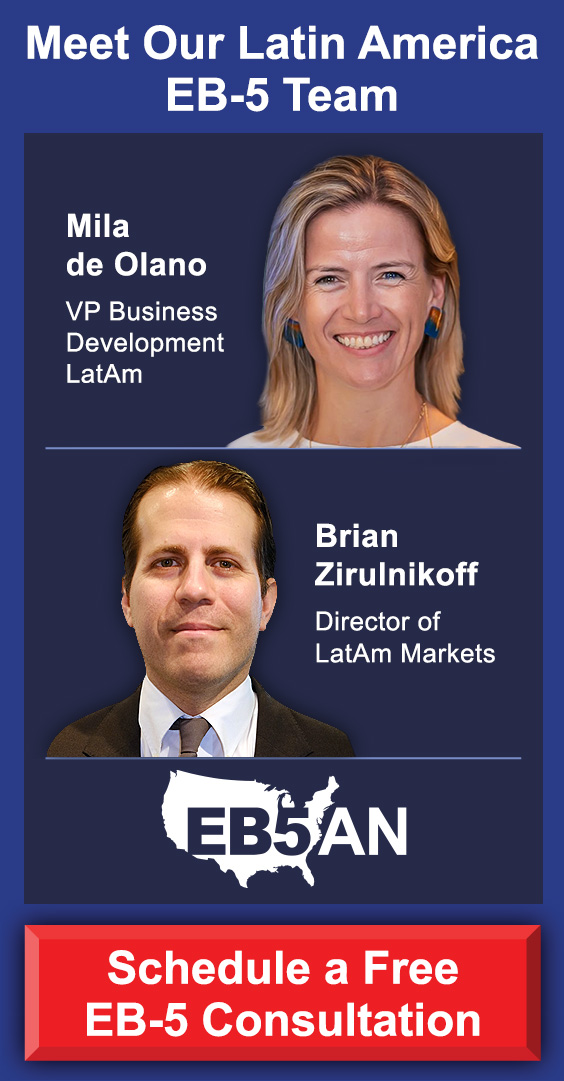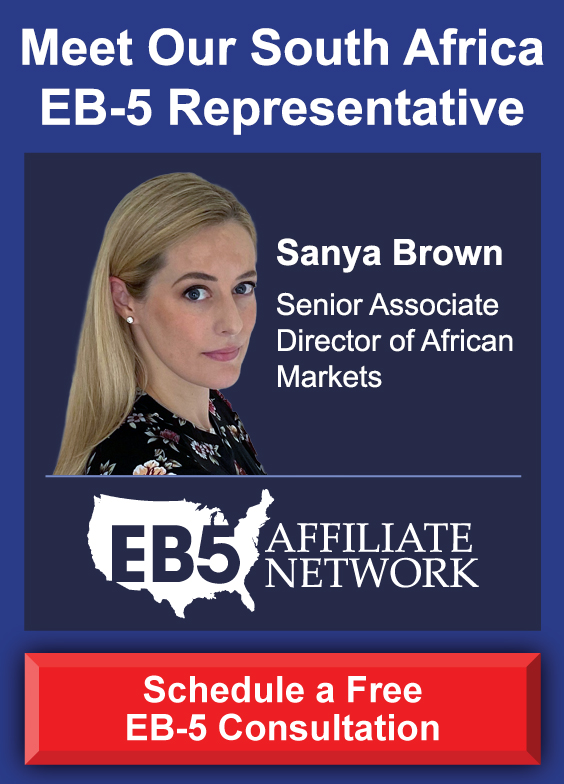The EB-5 Immigrant Investor Program offers a unique path to permanent residency in the United States for foreign investors. This program allows eligible investors to obtain a U.S. Green Card in exchange for an investment in a U.S. new commercial enterprise that will create jobs for U.S. workers.
For Indian nationals, the EB-5 program has gained immense popularity due to its clear pathway to a U.S. Green Card. Now, however, many Indian investors are concerned about changes to the visa process, especially with regard to potential retrogression in the Visa Bulletin.
In this article, we will discuss what happens if the U.S. Visa Bulletin shows a backlog for Indian EB-5 investors after you have made your investment. The key takeaway is that, while backlogs can be a concern, if you take the right steps early in the process, you likely won’t be as affected as you might think.
What Is the Visa Bulletin?
The Impact of a Backlog on Indian EB-5 Investors
- Priority Date and Visa Availability
- Visa Retrogression
- Impact of Concurrent Filing for Indian Investors
What Happens if Retrogression Happens After You Have Filed?
- If You Filed Before Retrogression, You’re Generally Safe
- You Can Still Obtain Your Employment Authorization Document and Advance Parole
- Concurrent Filing Is Not Possible After Retrogression
Why Indian EB-5 Investors Should Not Wait
EB5AN Can Help You Get a Green Card Fast
What Is the Visa Bulletin?
Before diving into the specifics of backlogs and concurrent filing, it’s essential to understand what the Visa Bulletin is. The U.S. Department of State publishes a monthly Visa Bulletin that indicates the availability of immigrant visas in various categories, including the EB-5 program.
The EB-5 program has annual caps on the number of visas issued, and the demand for these visas often exceeds their supply, particularly for nationals from countries like India and China. As a result, applicants from these countries may face a backlog, meaning that they must wait for their priority date to become current before their visa can be processed.
The Impact of a Backlog on Indian EB-5 Investors
As of now, Indian nationals applying for the legacy “unreserved” EB-5 program face significant visa processing delays due to high demand. This has resulted in a growing backlog in the unreserved category, which is expected to continue for several years—as well as potentially looming visa retrogression in the reserved set-aside categories.
While this can be concerning for new investors, it is important to understand how the timing of your application affects your EB-5 process, particularly if a backlog shows up on the Visa Bulletin after you’ve made your investment.
Below are the key points to keep in mind.
Priority Date and Visa Availability
When you file your EB-5 petition, your “priority date” is established. This is the date when the United States Citizenship and Immigration Services (USCIS) receives your I-526E petition, the initial petition for your EB-5 visa.
Your priority date is crucial because it determines when you can proceed to the next stages of the EB-5 process, such as adjusting status to become a U.S. permanent resident.
Visa Retrogression
As explained above, if the demand for EB-5 visas exceeds the annual supply, a backlog can develop. This means that there are not enough visas available for all applicants from certain countries, such as India. The U.S. Department of State adjusts the Visa Bulletin accordingly, and applicants from countries with backlogs will have to wait until their priority date becomes current to move forward with their visa application.
For instance, the February Visa Bulletin lists “01 Jan 2022” as the cut-off date for Indian nationals applying in the unreserved EB-5 category. In other words, if investors have a priority date—or the date on which an application was filed—earlier than January 1, 2022, then they are eligible to receive a visa in this category. If it is later than this date, however, then they are not eligible and will have to wait.
As of the February Visa Bulletin, the reserved set-aside visa categories are still “current.” However, once a cut-off date appears on an upcoming Visa Bulletin, Indian investors will have about 25 days to file for adjustment of status before they lose this benefit due to visa unavailability.
Impact of Concurrent Filing for Indian Investors
Concurrent filing refers to filing both the I-485 application (for adjustment of status to permanent resident) and the EB-5 petition (I-526E) at the same time. For those looking to adjust status, perhaps by shifting from an F-1 student visa to an EB-5 visa, concurrent filing simplifies and accelerates the process.
Critically, concurrent filing for adjustment of status is only possible when your priority date is current.
What Happens if Retrogression Happens After You Have Filed?
Now that we’ve laid out the basics, let’s focus on the important question: What happens if a Visa Bulletin shows a backlog after you have filed your EB-5 petition?
If You Filed Before Retrogression, You’re Generally Safe
If you filed your EB-5 petition and your I-485 while there was visa availability, meaning your priority date was current when you filed, then the appearance of a backlog after that point typically does not affect you. This is because your application is already in the system, and you are in the “queue.”
Put simply, even if a backlog develops later, you will still be able to continue the process based on your original priority date.
You Can Still Obtain Your Employment Authorization Document and Advance Parole
For those who already reside in the U.S. and are able to file for adjustment of status before the backlog kicks in, the delay in visa availability does not affect your ability to obtain certain benefits.
Most notably, you will still be able to receive an employment authorization document (EAD) and advance parole (AP). These documents allow you to work legally in the U.S. and travel internationally while you wait for your Green Card to be approved.
Concurrent Filing Is Not Possible After Retrogression
If you are a new applicant and the Visa Bulletin indicates that your priority date is not current, you cannot file an I-485 application alongside your I-526E petition. You would first have to wait for your priority date to become current before you can file the I-485 and adjust your status to a permanent resident.
As a result, you won’t be eligible to receive an EAD or AP in that timeframe, either.
Why Indian EB-5 Investors Should Not Wait
Given the potential for backlogs and long processing times, many Indian nationals wonder whether they should delay their EB-5 investment until the visa backlog clears up. However, the advice from immigration experts is clear: Indian investors should not wait to file.
By filing your EB-5 petition while visas are still available (and your priority date is current), you maximize your chances of obtaining the necessary benefits—like the EAD and AP—while you wait for your Green Card. This gives you more flexibility, allowing you to work and travel while your petition is being processed. Filing for adjustment of status also “locks in” your lawful status in the U.S., which means you are unlikely to get affected by challenges like nonimmigrant visa expiry or job loss.
Indian investors are also advised not to wait too long before they file their petitions, as any sign of retrogression in the Visa Bulletin could trigger an even bigger surge in applications. Once that happens, there will be limited time to file, and the sheer volume of applications could lead to rushed submissions, increasing the risk of costly mistakes. Preparing a well-documented, comprehensive petition takes time, and immigration attorneys will likely be overwhelmed during the rush. Starting the process now allows investors to work through the requirements carefully and submit a strong application without unnecessary stress.
EB5AN Can Help You Get a Green Card Fast
For Indian nationals interested in the EB-5 program, backlogs are a real concern. However, if you act promptly and file your petition while visas are available, you can avoid many of the complications that backlogs cause, including the ability to work and travel while waiting for your Green Card.
Delaying your filing may ultimately put you in a more difficult position, so it’s best not to wait for the perfect timing or for the backlog to clear. Instead, consider filing as soon as you are ready, and take advantage of the opportunities that are available today. And the first step is partnering with EB-5 experts.
EB5AN has helped more than 2,300 families from 70+ countries become lawful permanent residents of the United States. Our team has more than a decade of experience, and we offer our clients first-rate, low-risk EB-5 regional center projects with a 100% USCIS project approval rate.
If you would like to know more about how to navigate backlogs, book a free call with our expert team today.










